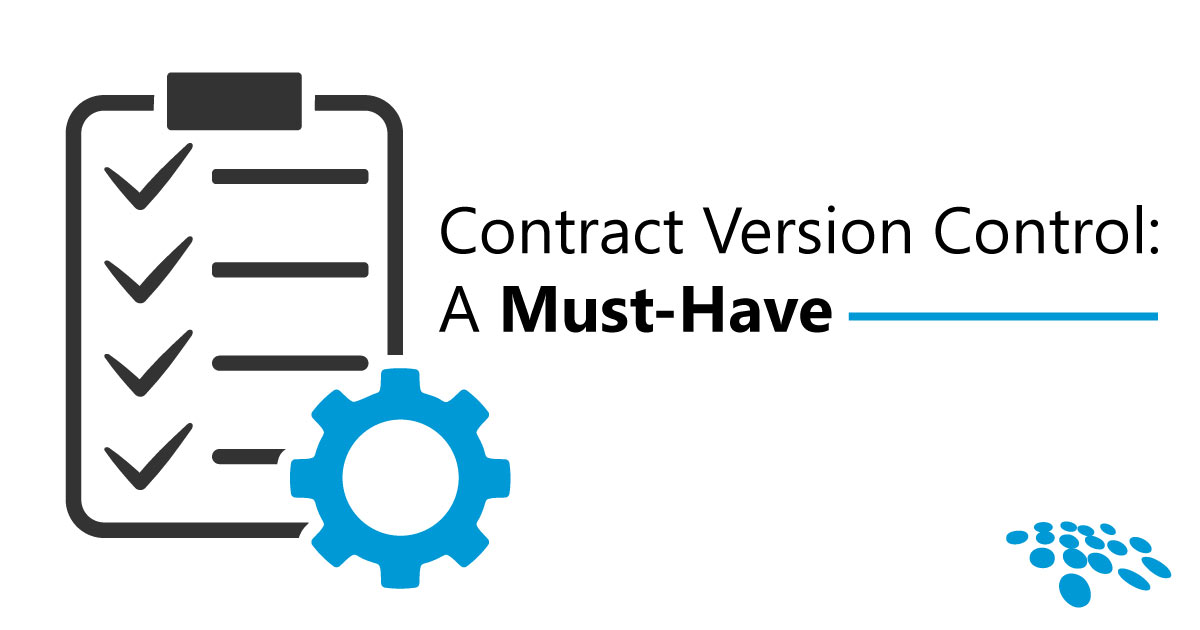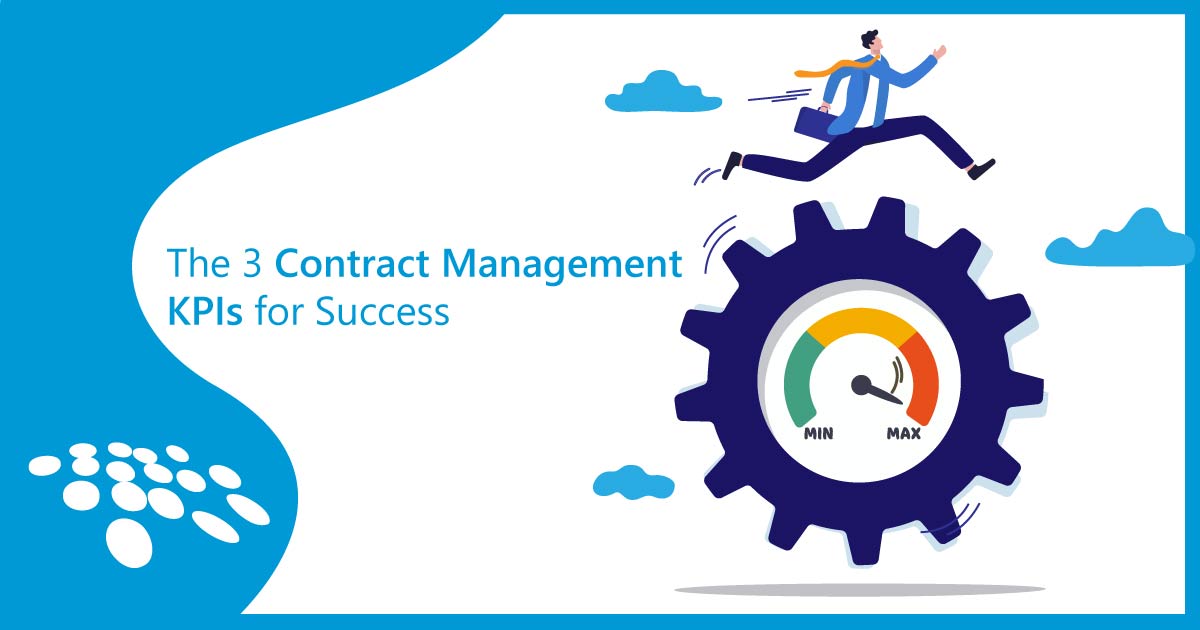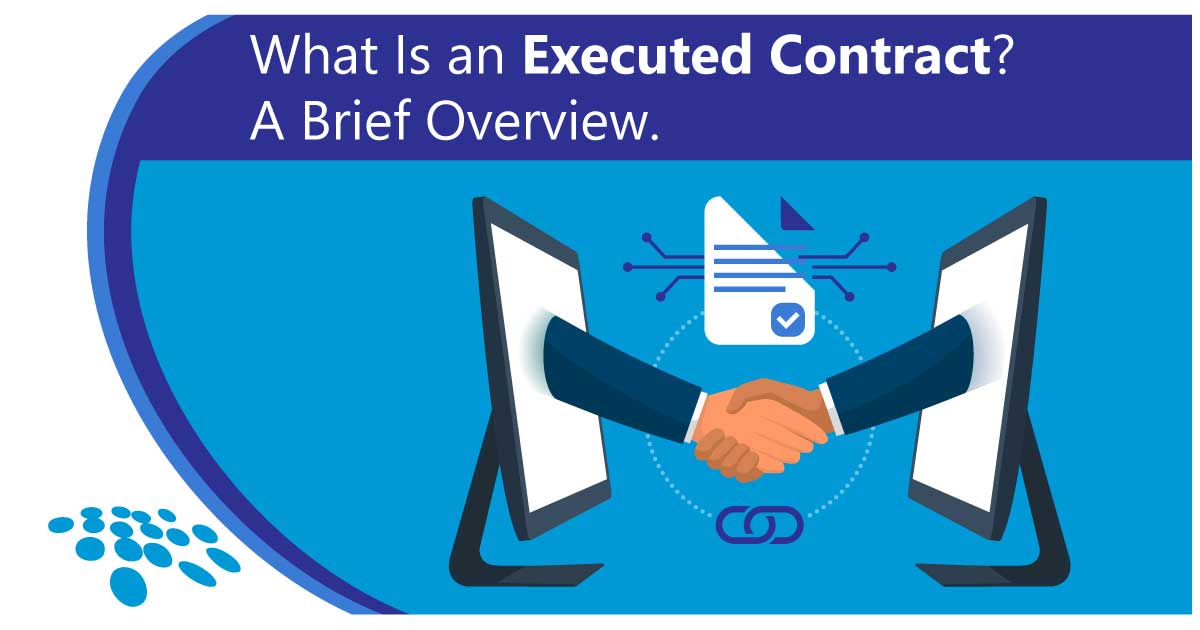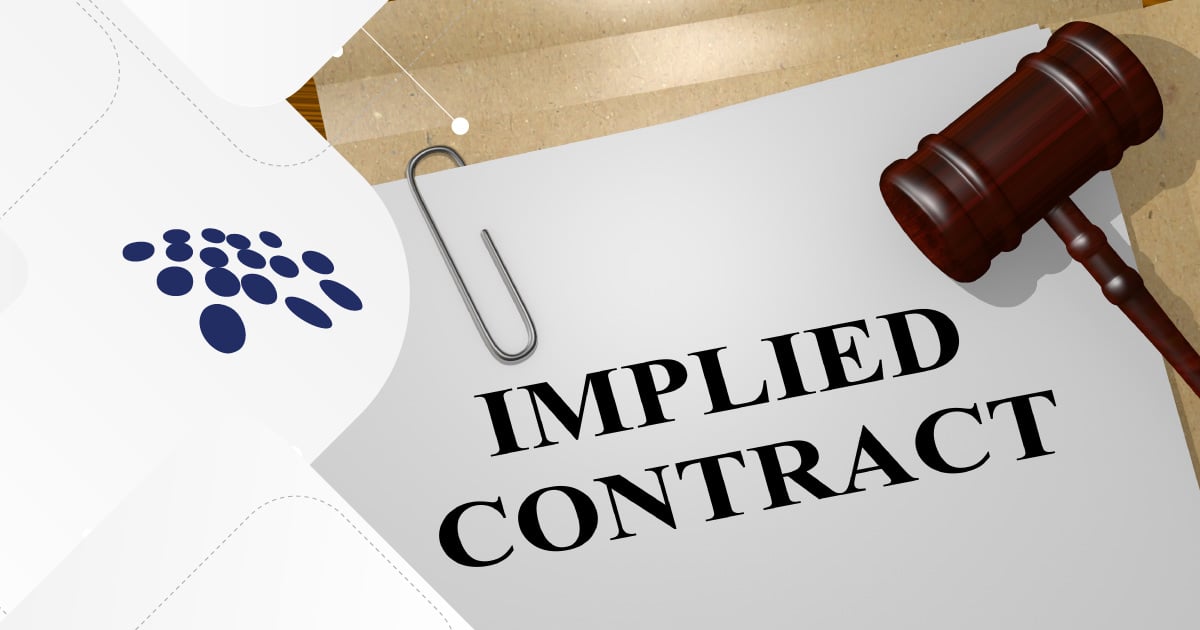
Oh no! It happened: contract lifecycle process failure. Something went wrong during contract lifecycle management - resulting in contract failure. But fear not; as a contract management professional, you are a worthy investigator. It is time to put on your detective hat, grab a notepad, and piece together the clues as to why your contract lifecycle process failed. You can also inspect how this tragedy could have been avoided with contract management software. Let the investigation begin!
Contract Lifecycle Process
To start off your investigation, you need to understand the contract lifecycle process. The contract lifecycle focuses on eight steps:
- Contract Requests
- Contract Authoring
- Contract Negotiations
- Contract Approvals
- Contract Signatures
- Contract Obligations
- Contract Compliance
- Contract Renewals
The contract lifecycle process is a paradigm for understanding contract management. It begins with contract requests and ends with contract renewals.
*Bring the investigation to life with this video!*
Contract Management Failure – Detective Notes
Time for you to inspect the crime scene for the vicious offense of contract management failure. Contract management failure is when there is an error, oversight, or bottleneck during contract lifecycle management. Contract management failure can result in wasted time, decreased revenue, lawsuits and compliance issues, missed key dates and contract obligations, and – in this case – the failed execution of your contract. This misfortune could have been avoided if your contract lifecycle had been centralized with comprehensive contract lifecycle management (CLM). But let's not dwell on the past; let's take a look at our clues to determine the culprit for this contract lifecycle process failure.
The Prime Suspect: Manual Contract Management
Let's bring in your prime suspect: manual contract management methods. This shady set of outdated contract procedures is a dangerous ne'er do well that has slashed the contract lifecycle management ROI of many innocent organizations. Shared drives, back-and-forth emails, a lack of version control, missed key dates…manual contract management methods are a menace to an upright society of contract lifecycle management best practices.
You have done a service to contract management professionals by getting this nuisance off the street for questioning - but you will need the proper evidence to put this lowlife away for good. It's time you grab a cup of coffee and get to work.
Clue #1 – Emailed Contract Request Management
Your first clue pertains to contract requests. You have found evidence of back-and-forth email communication for managing contract requests. In this case, it seems that this ultimately led to confusion and contract lifecycle bottlenecks – the first of many reasons your contract lifecycle process met its unwanted fate.
A proper CLM solution should have been there to protect the contract request process from such an offense.
Robust contract management software could have offered user-friendly request intake forms and dynamic questionnaires that would have helped requestors choose the type of contract they needed. A dynamic request intake form would have been designed with responsive fields that changed based on "Yes or No" questions and connected to workflows and contract templates in the backend. What's more, your team could have indicated required versus optional questions so that your contracting or legal department had all the initial information they needed to conduct the first review. This would have saved time and prevented this contract request disarray, and saved the start of your contract lifecycle process. Luckily, you are on the case to automate and centralize contract requests to prevent this from happening again.
Clue #2 – Decentralized Contract Authoring
The gravity of your suspect's misdeeds is setting in even more - as you have come across signs of decentralized contract authoring.
Your failed contract lifecycle process most likely ran rampant with disorganized tracking of contract creation document versions, disjointed contracts and subcontracts, and scattered contract clauses. These methods left your organization with contracts that were missing contract clauses, an overlooked reservoir of key dates and milestones, and ununified contract lifecycle management for creating contracts. It seemed your contract authoring process did not have a fighting chance!
The process should have been saved by a contract lifecycle management solution that supported merging essential contract data with pre-approved templates from your highly accessible library. You would have been able to support painless flow-down functionality as well. Your team could have tagged flow-down clauses and obligations to be included in subcontractor documents – in one unified location. Thorough, numbered version tracking could have virtually ensured that the most up-to-date document versions were accounted for. These top contract writing tools could improve contract authoring processes and protect them from such a catastrophe in the future. Regardless, your investigation continues.
Clue #3 – Back-and-Fourth Contract Negotiations
*Gasp*! you see that the suspect even made sure to thwart contract negotiations!
As your investigation proceeds, you find proof of contracts not being maintained within a secure library, not being assigned conditions, and not being assigned to specific key stakeholders for contract clause ownership. Version tracking procedures involved resources working on detached computers in disparate locations, as well as files saved locally - yielding misplaced document versions and edits. Key dates and milestones appear to have been overlooked because your organization relied on back-and-forth emails. Contract signatures and approvals had been delayed due to the lack of a centralized location in which to perform them. What a disaster!
Leading CLM software could have equipped your team with the tools to:- merge contract document data with clauses from your pre-approved clause and template library.
- assign clause ownership – which permits a resource allocated to a clause to be quickly notified if that clause is interacted with.
- restrict external resources exclusively to specific areas of the system that pertain to their processes.
- and leverage numbered document version control.
To prevent another contract negotiations process from falling victim to failure, make your case for contract lifecycle management software.
Clue #4 – Delayed Contract Approvals
You find that contract approvals fell prey to the suspect as well. When will it end?!
You have compiled evidence of the use of scattered spreadsheets, sporadic emails, and multiple shared drives. Delayed contract approvals seemed to have failed to meet business rules and regulatory compliance rules. As suspected, this resulted in missed opportunities for time-sensitive discounts, pricing options, and special terms.
Your team's contract approvals process likely would have been smooth and healthy with a contract administration software solution that supported intelligent contract workflow automation, robust audit trail functionality, and the ability to approve or reject contracts with workflow automation contract email notifications regarding pending contract approvals and other mission-critical tasks and requirements. Thankfully, your investigation progresses, and the details of this contract process failure are becoming more illuminated.
Clue #5 – Manual Wet Contract Signatures
Contract signatures were foiled by your suspect as well. Your process was robbed of the opportunity to sign contracts fast and efficiently. Unfortunately, contract lifecycle process detectives like you have come across this issue far too many times in the past.
Regrettably, you have come across the scene of signing methods that were outdated and slow. High costs for wet signatures and postage seem to have decreased your organization's bottom line. Further, signature bottlenecks had delayed the execution of a contract.
A trusted contract management solution should have been there to streamline your organization's signature procedures with prompt and user-friendly electronic signatures. Your organization could have cut send-to-sign time by as much as twenty percent with an innovative document toolbox, various placeholder configuration settings, one-off signatures with a highly accessible document collaboration portal, and rules-based signing configuration options. Hopefully, electronic signatures software tools can be at your corner next time to protect your process from such a misfortune.
Clue #6 – Missed Contract Obligations
Another case of missed contract obligations. What a shame! Time for you to fetch your magnifying glass and take a close look.
In this case, inattentive contract obligations management left your team at risk for forgetting to perform as per the terms of your contract. Overseeing contract obligations with emails, disjointed spreadsheets, and decentralized documents seems to have led to your team missing key dates, milestones, deliverables, and payments. This appears to have left your organization vulnerable to breach of contract, lawsuits, a harmed reputation, and wasted revenue.
Trusted CLM systems would have helped with automated key date notifications, task alerts, contract obligation status reports, milestone tracking, and highly configurable dashboards for powerful contract analytics. A leading contract software platform would have helped your team review user-friendly dashboards for contract obligations data such as:
- Contract KPIs (key performance indicators) e.g. the total number of open contracts, pending contracts, and contracts due for expiration.
- Contract key dates pending and resources assigned to contracts.
- Open tasks as per vendor management obligations.
Fortunately, CLM software can help bring justice to your contract obligations process in the future.
Clue #7 – Risk-Prone Contract Compliance Management
You are hot on your suspect's trail. You come across violations of regulatory contract compliance rules and other business rules – which may have led to monetary penalties, lawsuits, citations, or worse.
A solution that supported comprehensive compliance management of ranging regulation types should have been there to help your organization avoid litigation fees, late fees, and contract compliance process delays. Thorough and astute contract compliance could have helped your team decrease risk and boost revenue while setting the stage for future contracts. Your investigation shows that this compliance tragedy can be avoided in the future with a contract software solution that streamlines compliance with OFAC screening lists, FASB ASC 606 compliance, and other regulations and compliance types.
Luckily, robust CLM software can help you track post-award contract compliance to stave off compliance crooks like your suspect.
Clue #8 – Overlooked Contract Renewal Opportunities
You have just realized that this is the last clue you need to crack the case of contract lifecycle process failure. Justice awaits!
The final clue you come across is contract renewal failure that seems to have arisen from error-prone, time-consuming, and inefficient contract renewal processes. This seems to have increased risk and reduced the chance of opportunity realization. Your organization appears to have missed renewal dates and – thus – missed out on valuable opportunities.
This last stage of the contract lifecycle could have been saved with automated reminders and calendar alerts for contract renewal opportunities. Your organization could have leveraged a secure and web-enabled contract repository for contracts up for renewal. Further, you find that your team could have leveraged vigorous audit trails for contract renewal status changes throughout the life of a contract. Contract analytics could have protected your organization's contract renewal process by providing mission-critical insights at a glance. Rapid electronic signatures could have automated the signing of agreements set for renewal.
Sure - this instance of contract lifecycle process failure cannot be taken back, but you have strong evidence to apprehend your suspect and help prevent this tragedy from occurring again...
Busted! – Manual Contract Management: Behind Bars
Now, you have all the evidence you need. It is clear to see that…
MANUAL CONTRACT MANAGEMENT METHODS is the one responsible for the high crime of contract lifecycle process failure!
You have brought this delinquent to justice! No longer will outdated contract management methods lurk the streets and plague contract management professionals from various industries like they plagued your organization. You have helped put manual contract management processes behind bars for good. However, you must stay vigilant, and you need a partner...
...an all-time hero and protector for legal operations professionals and legal teams that will work around the clock to keep crooks like manual contract management methods off the streets of contract lifecycle management best practices for good. That hero is CobbleStone Contract Insight®.
CobbleStone Contract Insight – Your CLM Sleuth
CobbleStone Contract Insight is an award-winning contract management software solution that leading contract professionals from various industries have trusted for over 20 years and counting to keep manual contract management methods out of their organization. CobbleStone® has all of the features mentioned above and more so that you can tackle the contract lifecycle while reducing risk of process failure. With so many leading tools for each stage of the contract lifecycle, it’s no wonder why CobbleStone is named the CLM leader in the SPARK Matrix™ Report of 2022.
Book your free demo of CobbleStone today to see all the award-winning tools you can use to prevent contract lifecycle process failure and automate CLM!
To stay up to date on best practices, industry news, and CobbleStone Software updates, be sure to subscribe to our blog and YouTube Channel.
This article was originally published on January 25, 2022 and updated on September 22, 2022.
































